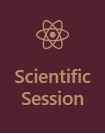The Effect of 100% Watermelon (Citrullus lanatus) Extract on Tooth Discoloration with Rub Techniques
DOI:
https://doi.org/10.18196/imunity.v1i1.30Keywords:
home bleaching, rub technique, watermelon extractAbstract
Tooth color can change because of several factors that are needed for teeth whitening. Teeth whitening can be performed on vital and non-vital teeth. Home bleaching is a vital whitening treatment that many people choose because practice can be done at home. Bleaching agent used for home bleaching techniques is 10% -22% carbamide peroxide. However, carbamide peroxide has side effects on the oral cavity. So, several previous researches have examined natural ingredients that contain the ability to whiten teeth. One of them is 100% watermelon extract which is proven to whitenteeth by immersing. However, this method cannot be applied clinically, so the purpose of this research is to know the effect of watermelon extract on tooth discoloration with rub techniques application. This type of research is an experimental laboratory. 10 maxillary premolars were discolored which were divided into two groups (watermelon extract and 10% carbamide peroxide). Each group was given the treatment 3 hours per-day for 14 days. After the bleaching process, the teeth are cleaned and immersed in a solution of saliva. Before and after bleaching, they were measured with a shade guide and spectrophotometer. Data analysis used paired t-test and wilcoxon. The results of paired t-test on group 1 p=0.024 (p <0.05). The wilcoxon test results on group 2 with p=0.043 (p <0.05). Both have influence, but the application of 10% watermelon extract is lower than 10% carbamide peroxide. It can be concluded: 100% watermelon extract with rubbing techniques has an effect on teeth whitening. Although, lower than 10% carbamide peroxide
References
Grossman, LI., (2014), Grossman's Endodontic Practice. 13th ed. Chandra SB, Krishna VG, editors. New Delhi: Wolters Kluwer Health
Setzer, F.K.M., Berman, L. H., & Rotstein, Cohen’s Pathways of the Pulp (11th ed). Bleaching I (Eds.) Procedures St. Louis: Elsevier.
Garg, N., & Garg, A. (2015). Textbook of Operative Dentistry. New Delhi: Jaypee Brothers Medical Publishers.
Perchyonok, V.T., & Grobler, S.R. (2015). Tooth-bleaching: Mechanism, Biological Aspects and Antioxidants. International Journal of Dentistry and Oral Health, 1 (3).
Riani MD, Oenzil F, Kasuma N. (2020) Pengaruh Aplikasi Bahan Pemutih Gigi Karbamid Peroksida 10% dan Hidrogen Peroksida 6% secara Home Bleaching terhadap Kekerasan Permukaan Email Gigi. JKA [Internet]. May 1 [cited 2020 Sep 6];4(2). Available from: http://jurnal.fk.unand.ac.id/index.php/jk a/article/view/252
Budirahardjo R. (2011), Pemutihan kembali gigi yang berubah warna pada anak Dental bleaching on children with discolored teeth. J Dent Maxillofac Sci. ;10(2):105.
Pary FC, Kristanti Y, Hadriyanto W. (2018), Pengaruh Karbamid Peroksida 10% dan 20% sebagai Bahan Home Bleaching terhadap Perubahan Kekasaran Permukaan Resin Komposit Nanofil dan Giomer. J. Ked Gi. Apr;6(2):146- 152
Asmawati., & Rieuwpassa, I. E. (2018). Comparison of enamel hardness after the application of dental bleaching agents strawberry gel and 10% carbamide peroxide. Journal of Dentomaxillofacial Science, 3(1), 17- 19.
Perdani AP, Oktarlina RZ, Jausal AN. (2018) Efek Buah Tomat (Solanum lycopersicum) sebagai Bahan Alami Pemutihan Gigi. :5.
Anggraeni W, & Aryanto M. (2020), Perbedaan pengaruh apel Anna dan Granny Smith sebagai bahan pemutih gigi alami Differences between Anna and Granny Smith apples as natural tooth whitening ingredients. Jurnal Kedokteran Gigi Unpad ;31(1)
Mariani, S., Rahman, N., & Supriadi. (2018). Uji Aktivitas Antioksidan Ekstrak Buah Semangka (Citrullus lanatus). Jurnal Akademika Kimia, 7 (2), 96-101.
Setyawati, A., & Nur,S. N. F. F. (2020). The Effectiveness Differences Between Watermelon (Citrullus lanatus) Extract 100% and Carbamide Peroxide Gel 10% in Tooth Whitening (ex vivo). Journal of Indonesian Dental Association, 3(1), 31-36.
Carey CM. Tooth Whitening: What We Now Know. (2014) Journal of Evidence Based Dental Practice. June;14:70–6.
Yunita, T. G., Haryani, W., & Sutrisno. (2017). Efektivitas antara Buah Stroberi dengan Buah Jeruk Lemon sebagai Bahan Alami Pemutih Gigi (secara in vitro). Journal of Oral Health Care, 5(1), 1-11
Pantone x-rite. (2016). A Guide to Understanding Color. Pantone. USA: Pantone.
Ragain, J. C. (2016). A Review of Color Science in Dentistry: Colorimetry and Color Space. Journal of Dentistry, Oral Disorders & Therapy, 4(1), 1-5.
Aschheim, K., & Dale, B., (2014). Esthetic Dentistry. 3rd Edition ed. s.l.:Mosby.
Setyawati, A., & Abdullah, S. (2017). Perbedaan Efektifitas antara Madu Bunga Kelengkeng (Euphoria Longana Sp) dengan Gel Karbamid Peroksida 10 sebagai Bahan Pemutih Gigi. Insisiva Dental Journal, 6(1), 1-7.
Juwita, I., Triaminingsih, S., & Matram, N. (2017). The Effectiveness of a Solution Containing Sodium Hypochlorite 0,5% in Removing Tea Discoloration on Heat -Cured Acrylic Resin. Journal of Physics.
Meizarini A, & Rianti D. (2005), Bahan pemutih gigi dengan sertifikat ADA/ISO (Tooth bleaching material with ADA/ISO certificate). Dent J (Majalah Kedokteran Gigi). 38(2):73.
Aulia M. Pemanfaatan buah strawberry sebagai bahan pemutih gigi. Makassar Dental Journal, 2018: 5(2):40–3.
Setyawati, A., & Syahland, M. R. (2013).The Effectiveness Grape (Vitis Vinifera L.) As An Ingredient For Tooth Whitening (Bleaching) Based On Concentration Difference. Insisiva Dental Journal, 2(1), 50-56.







